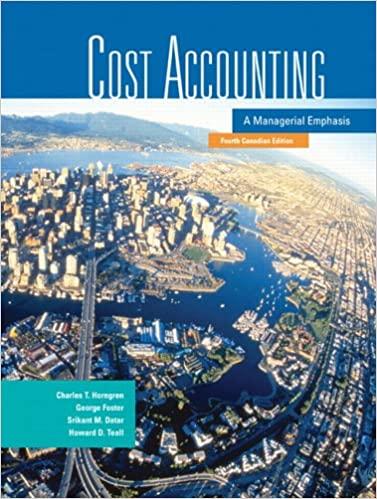Ethics, capital budgeting. (CMA, adapted) The Evans Company must expand its manufac turing capabilities to meet the
Question:
Ethics, capital budgeting. (CMA, adapted) The Evans Company must expand its manufac¬
turing capabilities to meet the growing demand for its products. The first alternative is to expand its current manufacturing facility, which is located next to a vacant lot in the heart of the city. The second alternative is to convert a warehouse, already owned by Evans, located 20 kilometres outside the city. Evans’s controller, George Watson, assigns Kenisha Kincaid, assistant controller, to use net present value computations to evaluate both proposals.
Kincaid obtains the following information. The investment in plant and equipment to expand the current manufacturing facility is $22.8 million, while a $26.40-million investment is required to convert the warehouse. At either site, Evans needs to invest $3.6 million in working capital. Cash revenues from products made in the new facility are expected to equal
$15.6 million each year. Ifthe warehouse is converted, cash operating costs are expected to be
$12 million per year. Expanding the current facility will result in some efficiencies: annual cash operating costs, if the current facility is expanded, will be $1.2 million lower than the cash operating costs if the warehouse is converted. Evans uses a ten-year period and a 14%
required rate of return to evaluate manufacturing investments. The estimated terminal dis¬
posal price of the new facility (including recovery of working capital of $3.6 million) at the end of ten years is estimated to be $9.6 million—regardless of where the plant is located.
Evans amortizes the investment in plant and equipment using straight-line amortization over ten years on the difference between the initial investment and terminal disposal price.
Watson is upset at Kincaid’s conclusions. He returns the proposal to her with the com¬
ment, “You must have made an error. The warehouse proposal should look better and have a positive net present value. Work on the projections and estimates.”
Kincaid suspects that Watson is anxious to have the warehouse proposal selected because the choice of this location would eliminate his long commute into the city. Feeling some pressure, she checks her calculations but finds no errors. Kincaid reviews her projec¬
tions and estimates. These too are quite reasonable. Even so, she replaces some of her origi¬
nal estimates with new estimates that are more favourable to the warehouse proposal, although these new estimates are less likely to occur. The revised proposal still has a negative net present value. Kincaid is confused about what she should do.
Required 1. Calculate the net present value ofthe proposals to expand the current manufacturing facility and to convert the warehouse. Which project should Evans choose on the basis of the NPV calculations?
2. Was George Watson’s conduct unethical when he gave Kenisha Kincaid specific instruc¬
tions on revising the proposal?
3. Was Kenisha Kincaid’s revised proposal for the warehouse conversion unethical?
4. Identify the steps Kenisha Kincaid should take to resolve this situation.
844 1 CHAPTER 21 COLLABORATIVE LEARNING PROBLEM
Step by Step Answer:

Cost Accounting A Managerial Emphasis
ISBN: 9780131971905
4th Canadian Edition
Authors: Charles T. Horngren, George Foster, Srikant M. Datar, Howard D. Teall





